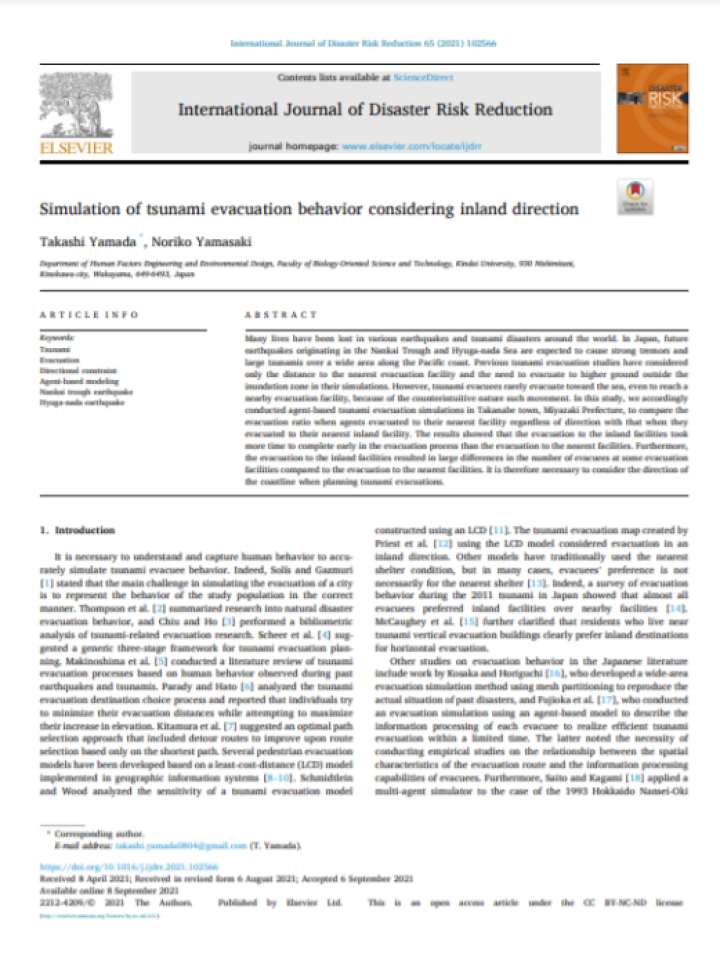Simulation of tsunami evacuation behavior considering inland direction
This study explores agent-based tsunami evacuation simulations to compare the evacuation ratio when agents are evacuated to their nearest inland evacuation facility regardless of direction relative to the coastline. Future earthquakes originating in the Nankai Trough and Hyuga-nada Sea near Japan are expected to cause strong tremors and large tsunamis over a wide area along the Pacific coast. Previous tsunami evacuation studies have considered only the distance to the nearest evacuation facility and the need to evacuate to higher ground outside the inundation zone in their simulations. However, tsunami evacuees rarely evacuate toward the sea, even to reach a nearby evacuation facility, because of the counterintuitive nature such movement. The study uses Takanabe town, located in the center of Miyazaki Prefecture, as a study area. A tsunami is expected to be particularly devastating in this area because residential zones are densely located below 10 m in elevation.
The findings reveal that there were time periods when the evacuation completion ratios of the two models differed by nearly a factor of two. In addition, the number of people evacuated to each evacuation site differed considerably according to the evacuation models applied. A simple model of evacuee path selection was then used to explain that these results were caused by the uneven distribution of evacuation facilities and residents. Importantly, the simulated evacuation could not be completed using either model before the expected tsunami arrival time with the existing evacuation facilities in the subject area. There were few evacuation facilities in the areas immediately adjacent to the coast, and the necessary evacuation routes crossed railroad tracks, which made it impossible to reach the nearest evacuation facilities without detours. However, the failure to account for the human preference to move away from the sea during a tsunami evacuation clearly resulted in an overestimation of evacuation ratio in the early stage of the evacuation and should therefore be considered in future evacuation simulations.
Explore further
